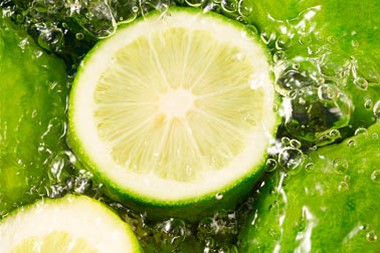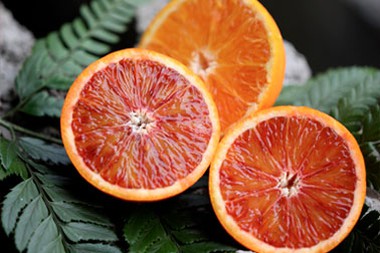How to Make Comfrey Root Extract
it is a herbal remedy that has been used for centuries due to its various medicinal properties. It is derived from the roots of the comfrey plant, scientifically known as Symphytum officinale. it contains several beneficial compounds, such as allantoin, rosmarinic acid, and tannins, which contribute to its healing effects. If you're interested in harnessing the potential benefits of it, here's a guide on how to make it.
1. Harvesting the Comfrey Roots:
To make it, you first need to obtain fresh comfrey roots. Choose mature plants that are at least two years old, as they tend to have higher concentrations of active compounds. Harvest the roots in early spring or late autumn when the plant is dormant. Use a garden spade or fork to carefully dig around the plant and loosen the soil. Gently lift the roots out of the ground, ensuring you don't damage them in the process.
2. Cleaning and Drying:
Once you have harvested the comfrey roots, remove any attached soil by gently brushing or rinsing them. Be cautious not to scrub the roots vigorously, as this could remove some of the beneficial compounds. After cleaning, trim off any excess roots or parts that appear damaged. Next, cut the roots into small pieces or slices to facilitate drying.
To dry the comfrey roots, you can use two methods: air drying or using a dehydrator. For air drying, spread the root pieces on a clean, dry surface, such as a baking sheet or a wire rack. Place them in a well-ventilated area away from direct sunlight. Stir or turn the roots occasionally to promote even drying. Alternatively, if you opt for a dehydrator, follow the manufacturer's instructions for the appropriate temperature and duration.
3. Grinding the Dried Roots:
Once the comfrey roots are fully dried, they need to be ground into a fine powder to maximize their extraction potential. Use a blender, coffee grinder, or mortar and pestle to crush the dried roots into a consistent powder. Ensure that the grinding equipment is clean and dry before use to prevent contamination.
4. Creating the Extract:
To make the extract, you will need a suitable solvent, such as alcohol or oil. Grain alcohol with a high alcohol content (at least 80%) is commonly used due to its superior extraction abilities. However, vegetable glycerin or oils like olive or coconut oil can be used as alternatives for alcohol-based extracts.
Place the powdered comfrey root in a clean glass jar or container. Add the chosen solvent until it completely covers the powdered roots. Stir the mixture thoroughly to ensure the powder is evenly distributed. Seal the jar tightly and store it in a cool, dark place for about four to six weeks. Shake the jar gently every few days to enhance the extraction process.
5. Straining and Storage:
After the extraction period, strain the mixture using a fine mesh strainer or cheesecloth to separate the liquid extract from the solid plant material. Squeeze the cloth or strainer to extract as much liquid as possible. Collect the resulting liquid, which is now your comfrey root extract.
Store the extract in amber glass bottles or dark-colored containers to protect it from light. Label each container with the date of extraction and the contents. Store the extract in a cool, dry place away from direct sunlight. Properly stored it can remain potent for up to one year.
In conclusion, making it involves harvesting the roots, cleaning and drying them, grinding them into a powder, and extracting the active compounds using a suitable solvent. With proper precautions and guidance, it can be a valuable herbal remedy for various external applications.

How do you use comfrey extract?
Comfrey extract is a natural substance derived from the comfrey plant, scientifically known as Symphytum officinale. This herbaceous plant has a long history of medicinal use and is renowned for its healing properties. it contains various beneficial compounds, including allantoin, rosmarinic acid, and tannins, which contribute to its therapeutic effects. In this article, we will explore the diverse applications and usage of it.
1. Topical application:
One of the most common uses of it is in topical preparations. Its soothing and anti-inflammatory properties make it a valuable ingredient in creams, ointments, and balms. When applied to the skin, it can help alleviate various conditions, such as bruises, sprains, strains, and joint inflammation. It aids in reducing pain, swelling, and speeding up the healing process. Additionally, it is often utilized in skincare products for its moisturizing and rejuvenating effects.
2. Wound healing:
it has been traditionally employed for wound healing purposes. The allantoin present in it promotes cell proliferation and tissue regeneration, accelerating the healing of cuts, abrasions, and minor burns. Its anti-inflammatory properties help reduce redness and swelling, while the tannins assist in protecting the wound from infection. it can be applied directly to the affected area or used as an ingredient in wound care products.
3. Bone and joint health:
it is also renowned for its potential benefits in supporting bone and joint health. It is often utilized in formulations for conditions like arthritis, osteoarthritis, and rheumatism. The anti-inflammatory properties of it can help reduce pain and swelling in the joints, improving mobility and overall comfort. Some studies suggest that it may aid in the healing of fractures and bone fractures. However, it is important to note that internal use of comfrey extract is controversial due to the presence of alkaloids that can be toxic to the liver.
4. Hair care:
Comfrey extract is occasionally found in hair care products due to its purported benefits for hair health. It is believed to strengthen the hair follicles, prevent hair loss, and promote hair growth. it can be incorporated into shampoos, conditioners, or hair masks to enhance the overall appearance and vitality of the hair. However, more scientific research is needed to substantiate these claims fully.
5. Gardening and composting:
Apart from its applications in human health and beauty, it is also used in gardening and composting. Comfrey plants are known to have deep roots that can absorb nutrients from the soil effectively. The leaves of comfrey can be harvested, dried, and used to make a nutrient-rich liquid fertilizer. This fertilizer, often referred to as "comfrey tea," is an organic and sustainable option for promoting plant growth and increasing soil fertility. Comfrey leaves can also be added to compost piles to speed up the decomposition process and enrich the resulting compost.
It is crucial to note that while it offers numerous potential benefits, there are certain precautions to consider. Internal use of it is discouraged due to the presence of toxic alkaloids that can harm the liver. Pregnant and breastfeeding women should avoid it altogether. Additionally, it is advisable to consult a healthcare professional before using it, especially if you have any underlying medical conditions or are taking medications.
In conclusion, comfrey extract has a wide range of applications, primarily in topical preparations for skin conditions, wound healing, and bone and joint health. It may also be used in hair care products and has utility in gardening and composting. While comfrey extract holds promise as a natural remedy, it is essential to exercise caution and seek expert advice before using it.
The Benefits of Comfrey Root for Hair Health
Comfrey root, derived from the Symphytum officinale plant, has been used for centuries in traditional medicine for its numerous health benefits. Among its many applications, it has gained attention for its potential benefits in promoting hair health. In this article, we will explore the various ways in which it can contribute to healthier, stronger, and more vibrant hair.
1. Nourishes the Scalp
One of the key factors in maintaining healthy hair is a well-nourished scalp. Comfrey root contains essential nutrients, including vitamins A, B12, and E, as well as minerals such as iron, calcium, and potassium. These nutrients help nourish the scalp, promoting optimal hair growth and overall hair health.
2. Strengthens Hair Follicles
it contains allantoin, a compound known for its ability to stimulate cell proliferation and promote tissue regeneration. When applied topically, it can strengthen hair follicles, making them less prone to breakage and reducing hair loss. This strengthening effect can contribute to thicker and more resilient hair strands.
3. Enhances Hair Growth
The rich nutrient profile of it, combined with its ability to strengthen hair follicles, makes it an excellent natural remedy for enhancing hair growth. Regular use of comfrey root-infused products or topical applications can help stimulate hair follicles, resulting in faster and healthier hair growth.
4. Conditions and Moisturizes Hair
Dry, brittle hair is often a result of inadequate moisture retention. it has emollient properties that can help condition and moisturize the hair, providing it with the necessary hydration and improving its overall texture. As a natural humectant, it helps attract and retain moisture in the hair strands, preventing dryness and frizz.
5. Adds Shine and Luster
Dull and lifeless hair can benefit from the natural shine-enhancing properties of it. Regular use of comfrey root-based hair products or rinses can help restore vitality and luster to the hair, giving it a healthy, radiant appearance.
6. Soothes Scalp Irritation
Comfrey root has anti-inflammatory properties that can help soothe an irritated or inflamed scalp. Conditions such as dandruff, eczema, and psoriasis can cause discomfort and disrupt hair health. Comfrey root's soothing effects can alleviate itching and redness, promoting a healthier scalp environment for optimal hair growth.
7. Protects against Environmental Damage
Exposure to environmental pollutants, UV radiation, and heat styling tools can damage hair, leading to dryness, brittleness, and breakage. Comfrey root contains antioxidants that help protect hair from oxidative stress caused by these external factors. It forms a protective barrier around the hair shaft, reducing the damage caused by free radicals and environmental aggressors.
Conclusion
Comfrey Root Extract offers a range of benefits for maintaining and improving hair health. Its nutrient-rich composition nourishes the scalp, strengthens hair follicles, and promotes hair growth. Additionally, it conditions and moisturizes the hair, adds shine and luster, soothes scalp irritation, and protects against environmental damage. With its natural properties and centuries-old usage, comfrey root serves as a valuable ingredient in hair care products and remedies.
Contact us:selina@ciybio.com.cn



